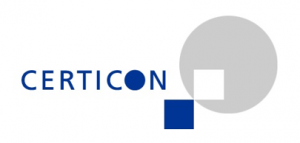Regulation and cost cutting fastest growing risks to global business
20.06.2011Company: EY
Flexibility and cost competitiveness remains the goals for global organizations as they fight for market share
As business volatility continues to increase, global organizations are being forced to become faster and leaner. Over the next three years, they see their greatest opportunities coming from improving operational agility and “optimizing” cost competitiveness. This is the clear message coming out of the new report Turn risks and opportunities into results from Ernst & Young. Regulation and compliance and cost cutting remain the biggest risks to global businesses. New at Top 10 global business risks are market risks and expansion of government´s role.
Jan Fanta, Ernst & Young Advisory Partner says: “In many sectors we’re seeing a return to growth in the marketplace. Whilst the past couple of years have been characterized by intense cost cutting, we’re now seeing companies responding to competition by improving execution of their strategies and by investing to improve operational agility and competitiveness.”
Top 10 global business risks
1. Regulation and compliance
2. Cost-cutting
3. Managing talent
4. Pricing pressure
5. Emerging technologies
6. Market risks
7. Expansion of government’s role
8. Slow recovery/double dip-recession
9. Social acceptance risk/CSR
10. Access to credit
Irrespective of the market they’re in, according to the research, regulation and compliance continues to pose the biggest overall risk to global businesses. Companies in most rapid growth markets, including China, India, Russia and the Middle East/North Africa (MENA) region, report that the impact of regulation and compliance risks is expected to diminish by 2013. In order to manage this risk, 59% of organizations are looking to strengthen their risk management functions.
Risks associated with the war for talent continue to rise. Managing talent is the third risk overall and, interestingly, ranks among the top four challenges for almost all sectors. This risk is also expected to escalate in importance as 2013 approaches. Many of the geographies where the risk is of particular concern are in the emerging markets. Respondents are evenly divided in citing both internal problems, such as weakness in HR process, and external pressures, such as rising competition for talent, as responsible for pushing this risk up the league table.
Jan Fanta explains: “The survey seems to be signaling that many businesses are busy refining their market focus, putting in place the business infrastructure to strengthen competitiveness and enable growth, and focusing on outstanding execution.”
Top 10 global business opportunities
1. Improving execution of strategy across business functions
2. Investing in process, tools and training to achieve greater productivity
3. Investing in IT
4. Innovating in products, services and operations
5. Emerging market demand growth
6. Investing in cleantech
7. Excellence in investor relations
8. New marketing channels
9. Merger and acquisition
10. Public-private partnership
The top four global business opportunities focus on investing in areas such as, processes, tools, training, IT, innovation, and strategic execution. Improving execution of strategy across business functions is ranked number one overall, with organizations seeking to improve the way in which they communicate the business vision, goals and strategy, involving all business functions in the strategic planning process, including budgeting and forecasting.
“This approach is a marked difference to how organizations have responded in the past to recessions. Traditionally, businesses have sought market opportunities at a much earlier stage. Instead, today, we are seeing businesses “look before they leap”; focusing on making sure they have the capability and innovative strengths to make a real impact in their chosen markets,” says Jan Fanta and concludes: “The research shows there is a high degree of consistency looking across both countries and industries, with a common focus on operational agility and cost competitiveness. This consistency applies across mature and emerging markets, though with some indications that in emerging markets organizations are sensitive to the need to adopt more mature operating models, structures, processes and business controls, as well as responding to competitive threats.”
Surprisingly, emerging market demand growth only appears at number five in the ranking of opportunities. Indeed one in five organizations reported that they had limited their focus on Asia, following setbacks there, to focus on their home market. Regardless of current obstacles, however, there is a prediction that this opportunity will rise by 2013.







